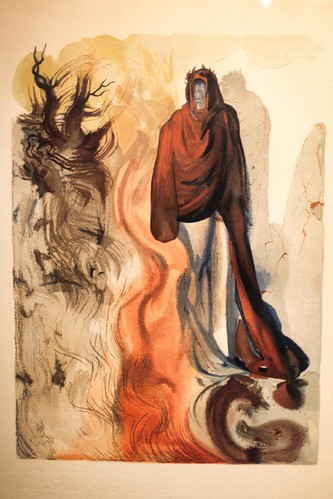Posts Tagged ‘Pencil’
Tips on Pencil Portrait Drawing – Composition

Composition refers to the manner in which your subjects are positioned relative to each other on the page. More formally, it is the arrangement of forms and spaces within the format of the page.
* Balance
The main characteristic of a good composition is that it creates a feeling of balance in the viewer’s mind. This balance should be present on at least two levels:
First, there is the balance of position. This means that the forms and spaces out of which the portrait is made up should be balanced relative to the vertical and the horizontal going through the center of the page.
Second, there should also be a balance with respect to value. The darks and lights should balance each other out in an overall sense. In other words, having too much black on one side or a complete lack of it is not the recommended course to take.
* Experiment
Having said that, do not be afraid to experiment with the distribution of forms, spaces, and values. Sometimes an unexpected deviation from the perfect balance gives excitement and interest to a drawing.
Follow your artistic sensibility. With practice, this sensibility can be developed and soon you will acquire a natural sense for good composition and how and where to surprise the viewer.
* Shapes
When considering the composition of your drawing you should think in terms of four major shapes: the triangle, the circle, the rectangle, and the square. Any of those shapes can be the point of interest of your portrait.
All other shapes should be arranged in support of that point of interest. Essentially, this means that the viewer should be led or guided towards the intended focal point of the drawing.
* Focal Point
One common compositional mistake occurs when the subject matter outside of the focal point is arranged in such a manner that the viewer is led in a direction away from the center of interest. In other words, the viewer is discouraged from looking at the area the artist thought was the most interesting.
In this regard we should remember that in the West, the viewer’s eye tends to enter a drawing or a painting from the left (just as we do when we read from left to right). Therefore, a good composition often has an entry point on the left of the drawing and from there leads the viewer’s eye to the focal point.
* Detail
The focal point should also be the area where you add the most detail to your portrait drawing. Areas deemed less important can be less developed and left to be finished by the viewer’s imagination.
Don’t forget, a portrait drawing should not be a copy of the photograph. Ideally, the personality of both the subject and the artist should be reflected in the end product.
* Check Balance
Another way of assessing whether or not you have a good composition is to cover up one shape or another and see if it improves the balance or not. A good composition is such that if you remove one shape, the whole drawing is clearly thrown out of balance. If you feel that by removing a certain part of your drawing the balance improves, by all means, leave that part out.
Much more can be said about composition. Entire volumes have been written about compositional rules and processes. However, developing the idea of balance on the levels of position and value will give you a very good start.
Tags : Painting Instructional history Book of Art senior equipment welcomeholidayservice American Mailbox
Pencil Horse Drawings

Image : http://www.flickr.com
I’m going to start by saying that I assume you have your pencils, drawing paper and erasers ready, so I’m going to skip all that and plunge right in to show you how you can sketch your horse in just a few minutes.
Yes, I did say in just a few minutes. In fact, it’s important that we complete the sketch as quickly as we can. Why is that so? That’s because unlike a still object (as in drawing still life), live horses move around.
It’s just like trying to draw a baby. Since a baby can’t keep still, and you can’t tell it to keep still, the best time to draw a baby is when it’s asleep.
But we don’t want to draw a sleeping horse do we? We want to draw a real live, energetic and lively horse! And to capture that in your sketch, there’s no better way than to use quick pencil strokes to capture the life, energy and movement of the horses.
There are three specific areas that you need to pay special attention to though. The first area is the eyes, the second is the rippling muscles, and the third (which is the most important) is the hair on the horse.
The eyes of a horse is what makes your sketch comes to life. You start by drawing the body and then add the eyes and the drawing immediately comes to life! Don’t believe me? Try it for yourself!
Secondly, you will have to capture the rippling muscles of the horse to make it look real. Horses are powerful and magnificent looking creatures. The key is to draw them lean and fit. After all, horses do exercise a lot.
And when they prance, trot or gallop, their magnificent mane of hair flows behind them. The mane and the tail makes up a large part of your drawing, so you seriously need to capture the beauty of the flowing hair.
If you can capture these three elements, then I give you an A grade. Now go show off your great looking horse or pony to the whole world!
Related : Personal Transporter. At Segway Painting Instructional soda.co.cc welcomeholidayservice